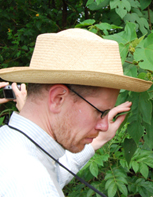Past environmental conditions can be reconstructed from fossil species assemblages with transfer functions. It is a simple matter to create a transfer function from modern species assemblages and associated environmental data and then use this to generate a reconstruction for fossil data — provided there are species in common, a reconstruction will be generated. It is more difficult to evaluate whether the reconstruction is likely to be reliable, yet this evaluation is an essential part of the reconstruction process. Despite this importance, several papers I have read or reviewed recently have included little or no evaluation of the transfer functions or reconstructions. Perhaps the writers have done a through evaluation and expect the reader to trust them that all the diagnostics were good, or perhaps the writers are so happy with their reconstruction that they neglected to examine the diagnostics.
Many of the important diagnostics are described in Juggins and Birks (2012), but there is no R code associated with this chapter (or at least I cannot find it). This presents a potential obstacle for those less confident about their R skills.
Over the next few weeks I’m going to write several posts giving R code for transfer function and reconstruction diagnostics, mainly using the rioja and analogue packages in R. They are going to be written in the order I feel like, rather than any logical order, and I’ll link to some relevant code I’ve already posted. I am not going to argue that all the diagnostics I present should be included in a paper, but some key diagnostics should be included, and many of the others examined.
Posts

 @richardjtelford
@richardjtelford
Pingback: Transfer functions and species coverage | Musings on Quantitative Palaeoecology
Pingback: N2 and the variability of optima | Musings on Quantitative Palaeoecology
Pingback: Analogue quality, reconstruction quality | Musings on Quantitative Palaeoecology
Pingback: Beyond nearest analogue distance | Musings on Quantitative Palaeoecology
Pingback: Musings on Quantitative Palaeoecology
Pingback: The ‘New York’ principle of site selection | Musings on Quantitative Palaeoecology